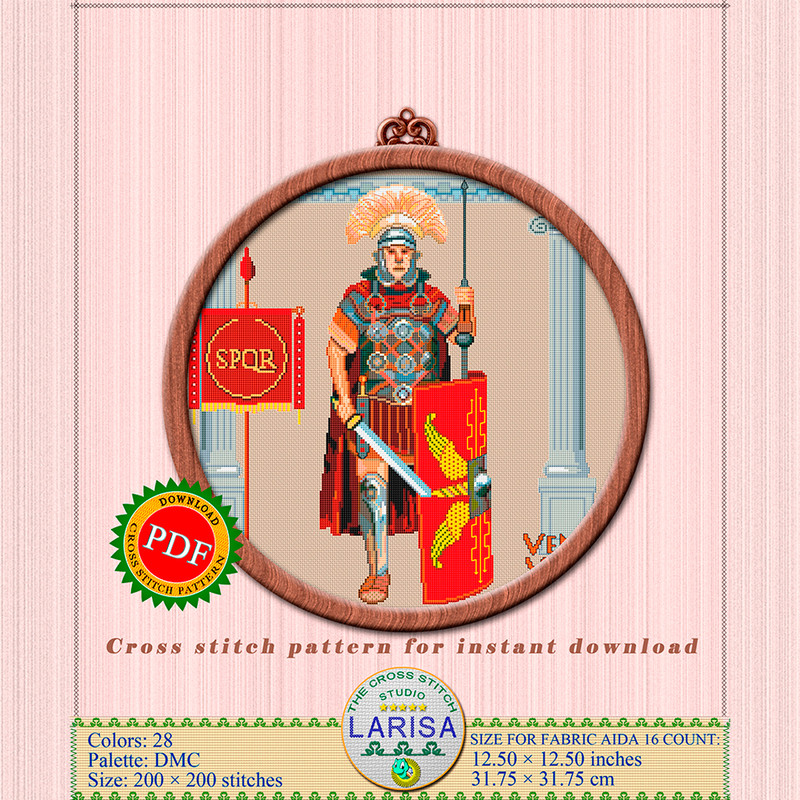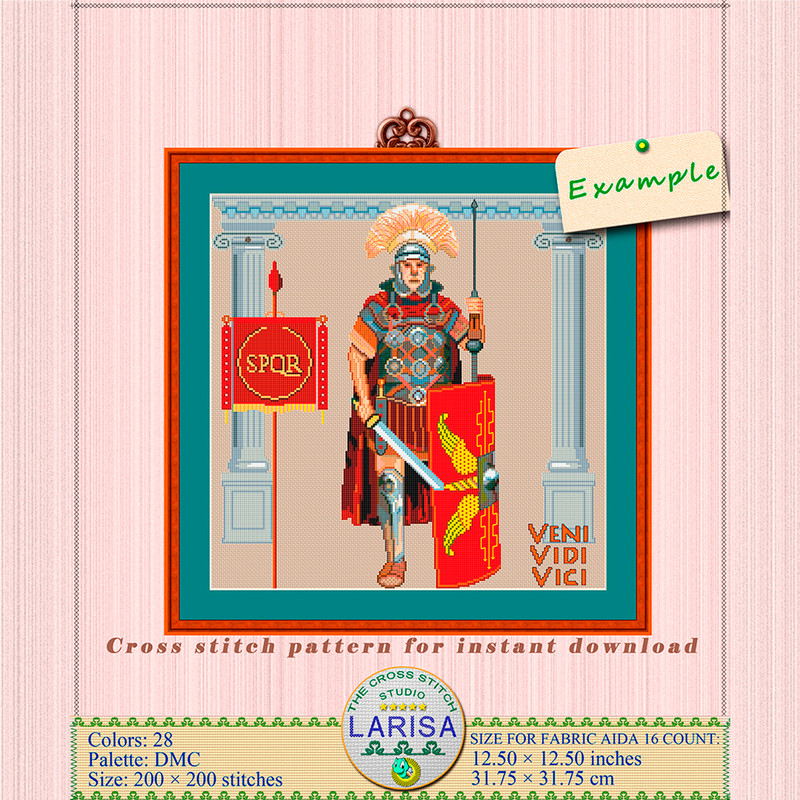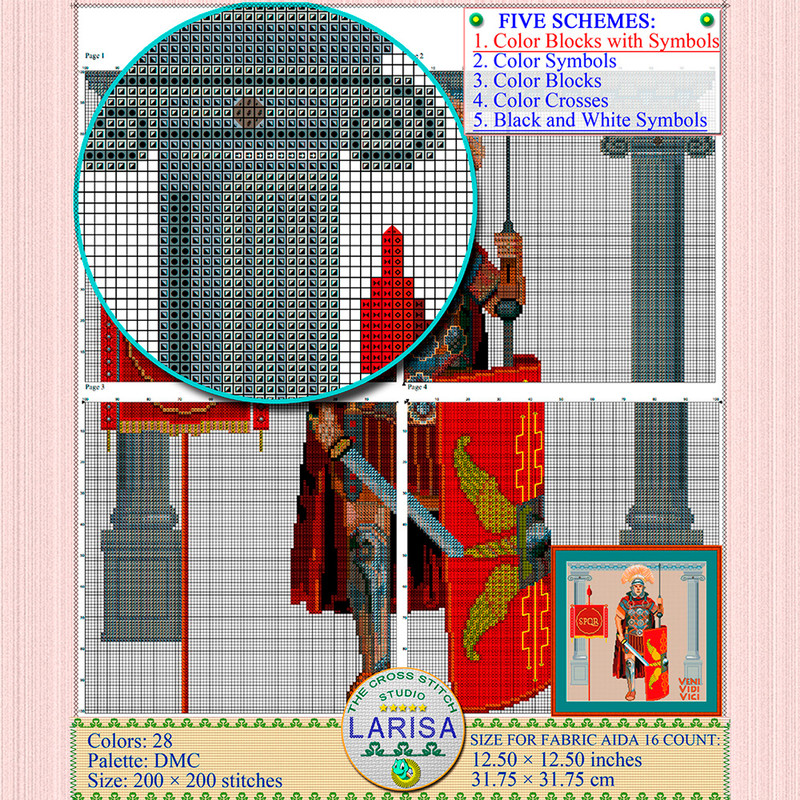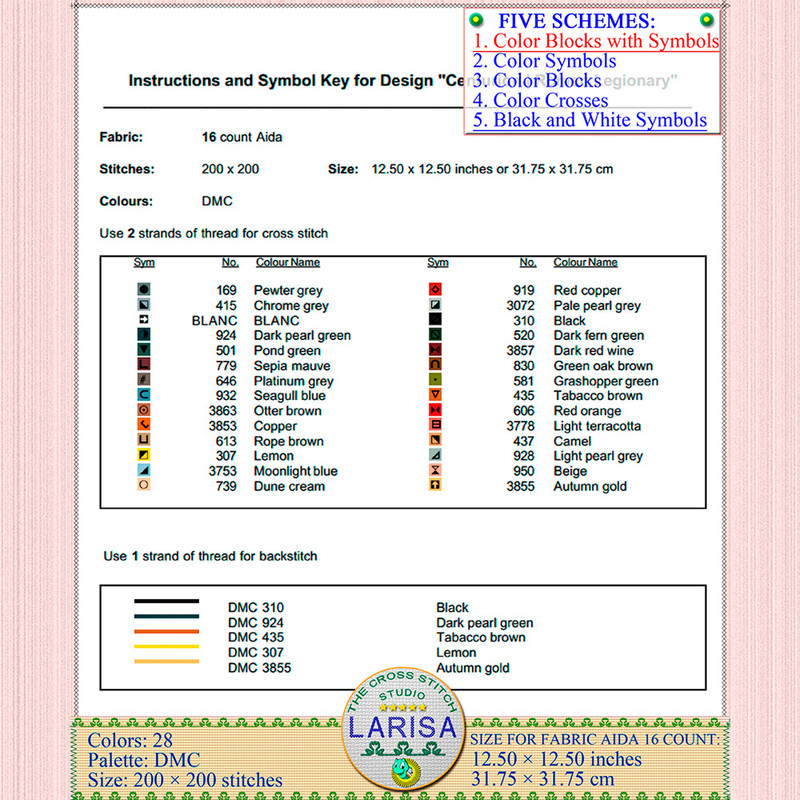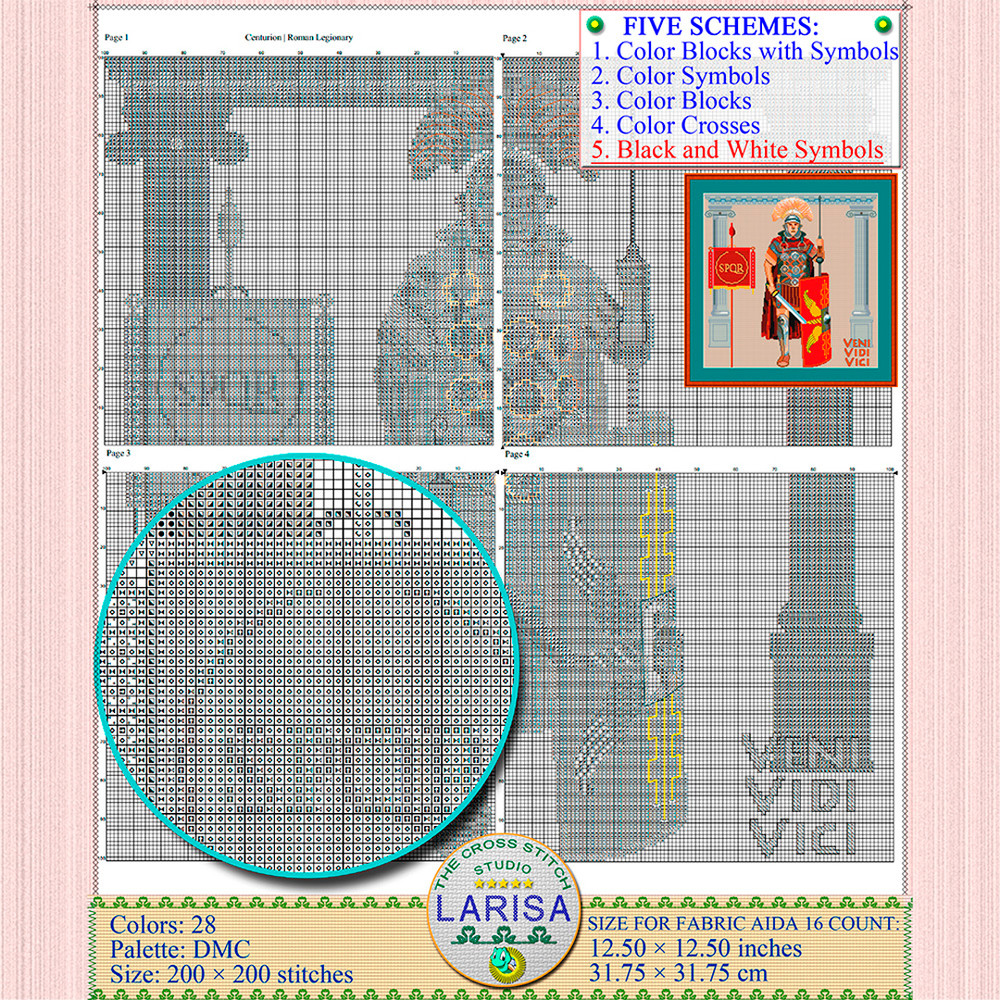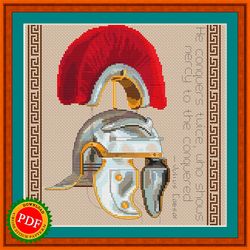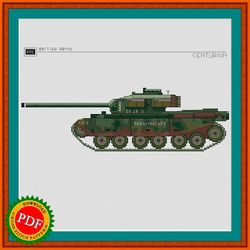Centurion Cross Stitch Pattern | Roman Legionary
Centurion cross stitch pattern
🔎 Roman Legionary | Roman Legionary | Roman Warrior: cross stitch pattern, printable cross stitch, PDF pattern, printable PDF pattern.
🔔 Only digital format.
🔎 The pattern comes in .PDF format.
★ Pattern specification for different types of fabric.
• Fabric: Aida.
• Colors: 28. Palette: DMC.
• Size: 200 × 200 stitches.
• Finished size will vary depending on the count fabric/canvas you choose.
✔ 14 count ⇒ Size: 14.29 × 14.29 inches | 36.30 × 36.30 cm
✔ 16 count ⇒ Size: 12.50 × 12.50 inches | 31.75 × 31.75 cm
✔ 18 count ⇒ Size: 11.11 × 11.11 inches | 28.22 × 28.22 cm
💾 5 PDF includes:
1. FIVE SCHEMES (Fabric: 16 count Cream Aida):
• Color Blocks with Symbols.
• Color Symbols.
• Color Blocks.
• Color Crosses.
• Black and White Symbols.
2. Color photo for reference.
3. List of DMC thread colors (instruction and key section).
🔔 Please note this is a digital pattern only! No fabric, floss, or other materials are included in the listing.
⛔ Returns & exchanges. This is a digital product and I don’t accept returns, exchanges, or cancellations.
❤ Feel free to contact me if you have any further questions.
❋❋❋❋❋❋❋❋❋❋
✎ Reference Information.
🔎 The Roman ‘legionary’ was a professional heavy infantryman of the Roman army after the Marian reforms. These soldiers would conquer and defend the territories of the Roman Empire during the late Republic and Principate eras, alongside auxiliary and cavalry detachments.
🔎 A centurion was a professional officer of the Roman army after the Marian reforms of 107 BC. Centurions originally commanded a hundred men (a century) of around 80 legionaries, with the other 20 being servants and orderlies, but senior centurions commanded cohorts or took senior staff roles in their legion.
🔎 SPQR, an abbreviation for Senātus Populusque Rōmānus (“The Roman Senate and People“; or more freely “The Senate and People of Rome“), is an emblematic abbreviated phrase referring to the government of the ancient Roman Republic.
🔎 Veni, vidi, vici is a Latin phrase popularly attributed to Julius Caesar who, according to Appian, used the phrase in a letter to the Roman Senate around 47 BC after he had achieved a quick victory in his short war against Pharnaces II of Pontus at the Battle of Zela. The phrase is used to refer to a swift, conclusive victory.
The English phrase “I came, I saw, I conquered” employs what is known as a comma splice. Grammarians generally agree that using a comma to join two independent clauses should be done sparingly. Sometimes, the comma splice is avoided by using a semicolon instead: “I came; I saw; I conquered”.



